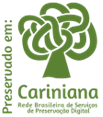The contribution of digital learning platforms to undergraduate teachingt
DOI:
https://doi.org/10.62758/re.v2i2.183Keywords:
Digital Platforms, Digital Educational Platforms, Digital Informational Resources, Teaching-LearningAbstract
This study approaches the Digital Platforms phenomenon that has become more present in this century, however, it is a result of the technological advance caused by the Industrial Revolutions that triggered innovative changes such as the automation of processes, the technical-scientific knowledge, the cybernetic physical systems, the spread of networked computers, the big data, the cloud computing, the artificial intelligence, the robotics, among other inventions. Thus, digital platforms act as online facilitators in the communication process between entities and people, adding value to the provision of services and products. This digital transformation scenario, starting with one of the greatest inventions of the 20th century, the Internet, has revolutionized the ways of relating on a global scale, and information has gained new relevance, going from individual to patrimonial. There are those who consider that digital platforms are hosts of information so that relationships become possible, regardless of distance, time, volume of data, language, or type of content. It is worth pointing out that in the year 2020 the world was surprised by the appearance of the new SARS-COV-2 coronavirus, a disease called COVID-19, and that due to its seriousness in the contamination process, the Ministry of Health proposed social distancing in all work, entertainment, travel, and teaching demands, with permission only for emergency services and with all the necessary health guarantee rules. The educational field had to make rapid changes and updates to its procedures, content, and lesson plan strategies in order to cause as little harm as possible to the students' performance. With this, digital platforms have become resources of first necessity. Therefore, considering these issues, it is worth reflecting: to what extent do digital platforms as a technological resource cooperate with the learning process? Thus, the objective of this study is to understand the contribution of digital platforms to the teaching and learning process in undergraduate courses. The methodological procedures applied are qualitative in nature; type of descriptive-exploratory research, based on a bibliographic survey of books, articles and theses researched in databases in the area of Information Science. Authors such as Bisol (2010); Parker, Alstyne and Choudary (2018); Miskulin (2021); Schmidt (2017); Rockembach (2013) and Martín-Gutiérrez, et al. (2014) support the theoretical foundation of the study. The results show the challenge that educators face when using technological resources that lack constant updating of systems, pedagogical preparation of teachers, and adequate infrastructure. The platforms act as mediators and facilitators in the academic practices, contributing to the utilization of the subjects and research works, besides promoting interaction among people, awakening more interest because of the variety of stimuli for learning.
Key-Words: Digital Platforms; Digital Educational Platforms; Digital Informational Resources. Teaching-Learning.
References
Associação Brasileira de Educação a Distância. CENSO EAD 2019-2020. (2022). Relatório Analítico da Aprendizagem a Distância no Brasil. https://abed.org.br/arquivos/CENSO_EAD_2019_PORTUGUES.pdf.
Baldwuin, C. Y.; Woodard, C. J. The Architecture of Platforms: A Unified View. (2009). Platforms, Markets and Innovation. 19-44. Research Collection School Of Computing and Information Systems. https://ink.library.smu.edu.sg/sis_research/2452/ DOI: https://doi.org/10.4337/9781849803311.00008
Bisol, C. A. (2010) Ciberespaço: terceiro elemento na relação ensinante/ aprendente. In: Valentini, C. B.; Soares, E. M. S. (Org.). Aprendizagem e Ambientes Virtuais: compartilhando ideias construindo cenários. Caxias do Sul: Educs.
Castells, M. (2003). A Galáxia da internet: refle-xões sobre a internet, os negócios e a sociedade. Rio de Janeiro, Ed. Paz e Terra.
Datareportal. (2022). Internet use in Brazil. https://datareportal.com/digital-in-brazil
http://modares.ac.ir/uploads/Edu.Plexprvmng.News.970417.2.pdf
https://www.brapci.inf.br/_repositorio/2015/12/pdf_a9c97a9a67_0000018247.pdf
https://www.scielo.br/j/cebape/a/8VsR3wSrH9f4wHjwJhXb3Hx/abstract/?lang=en
Kenski, V. M. (1998). Novas tecnologias: o redimensionamento do espaço e do tempo e os impactos no trabalho docente. Revista Brasileira de Educação, Rio de Janeiro, n.8, p.58-71, 1998. http://educa.fcc.org.br/pdf/rbedu/n08/n08a06.pdf
Martín-Gutiérrez, J., et al. (2014). Augmented reality to promote collaborative and autonomous learning in higher education. Elsevier, pp. 752-761. DOI: https://doi.org/10.1016/j.chb.2014.11.093
Miskulin, A. P. S. C. (2021). Aplicativos e Direito do Trabalho: a era dos dados controlados por algorítmos. São Paulo: Editora JusPodivm.
Moran, J. M. et al. (2000). Novas tecnologias e mediação pedagógica. 6. ed. Campinas: Papirus.
Prensky, M. (2001). Aprendizagem baseada em jogos digitais. São Paulo: Senac.
Rockembach, M. (2013). Evidências da Informação em plataformas digitais: uma reflexão teórica à construção de um modelo. Informação arquivística. Rio de Janeiro, v.2. n.1, pp. 89-109. DOI: https://doi.org/10.18377/2316-7300/informacaoarquivistica.v2n1p89-109
Schmidt, F. A. (2017). Digital Labour Markets in the Platform Economy. Good Society – Social Democracy.Parker, G. G., Alstyne, M. W. V., Choudary, S. P. (2018). Plataforma a revolução da estratégia: o que é a plataforma de negócios, como surgiu e como transforma a economia em alta velocidade. Alta Books.
Swiatkiewicz, O. (2014). Soft, hard or moral skills: anexploratory study on the workers skills thar organization in Portugal appreciate most. Cadernos EBAPE, Escola Brasielria de Administração Pública e de Empresas Rio de Janeiro, v. 12, n. 3, pp. 663-687, jul-set.
Tori, R. (2003). Tecnologias interativas na redução de distância em educação: taxonomia da mídia e linguagem de modelagem. (Tese Livre docência). – Escola Politécnica da Universidade de São Paulo. Departamento de Engenharia de Computação e Sistemas Digitais. https://www.teses.usp.br/teses/disponiveis/livredocencia/3/tde-08072022-082125/publico//RomeroToriLD.pdf
Tori, R. (2014). A presença das metodologias interativas na educação. Revista de Computação e Tecnologia da PUC-SP. Departamento de Computação/FCET/PUC-SP, Vol. II, No.14. https://revistas.pucsp.br/index.php/ReCET/article/view/3850/2514.
Downloads
Published
How to Cite
Issue
Section
License
Copyright (c) 2022 Revista EDICIC

This work is licensed under a Creative Commons Attribution 4.0 International License.
The Association holds the copyright of the texts it publishes and, therefore, adopts a Creative Commons License, CC BY 4.0 DEED Attribution 4.0 International (https://creativecommons.org/
You are free to:
- Share: copy and redistribute the material in any medium or format for any purpose, even commercially.
- Adapt: remix, transform, and build upon the material for any purpose, even commercially.






